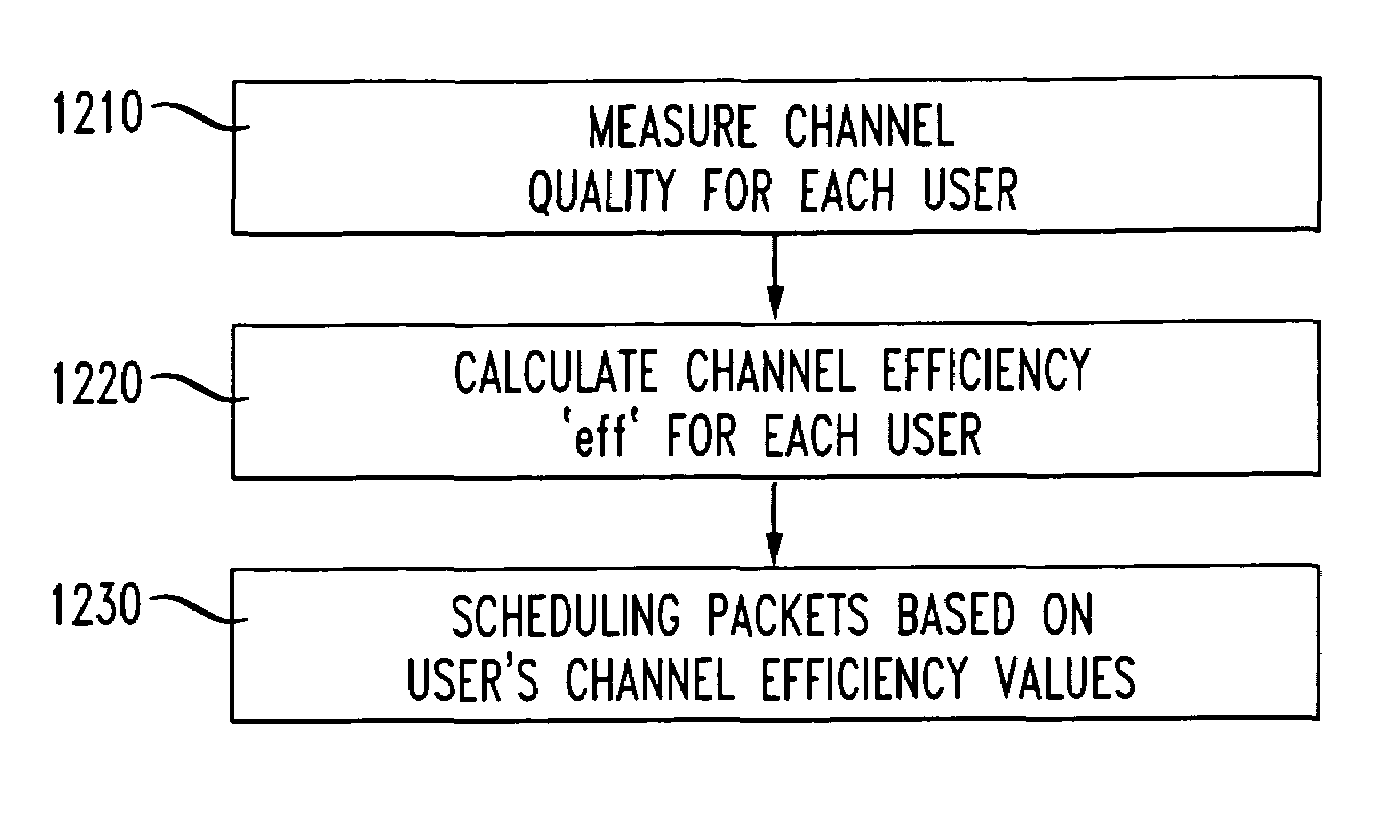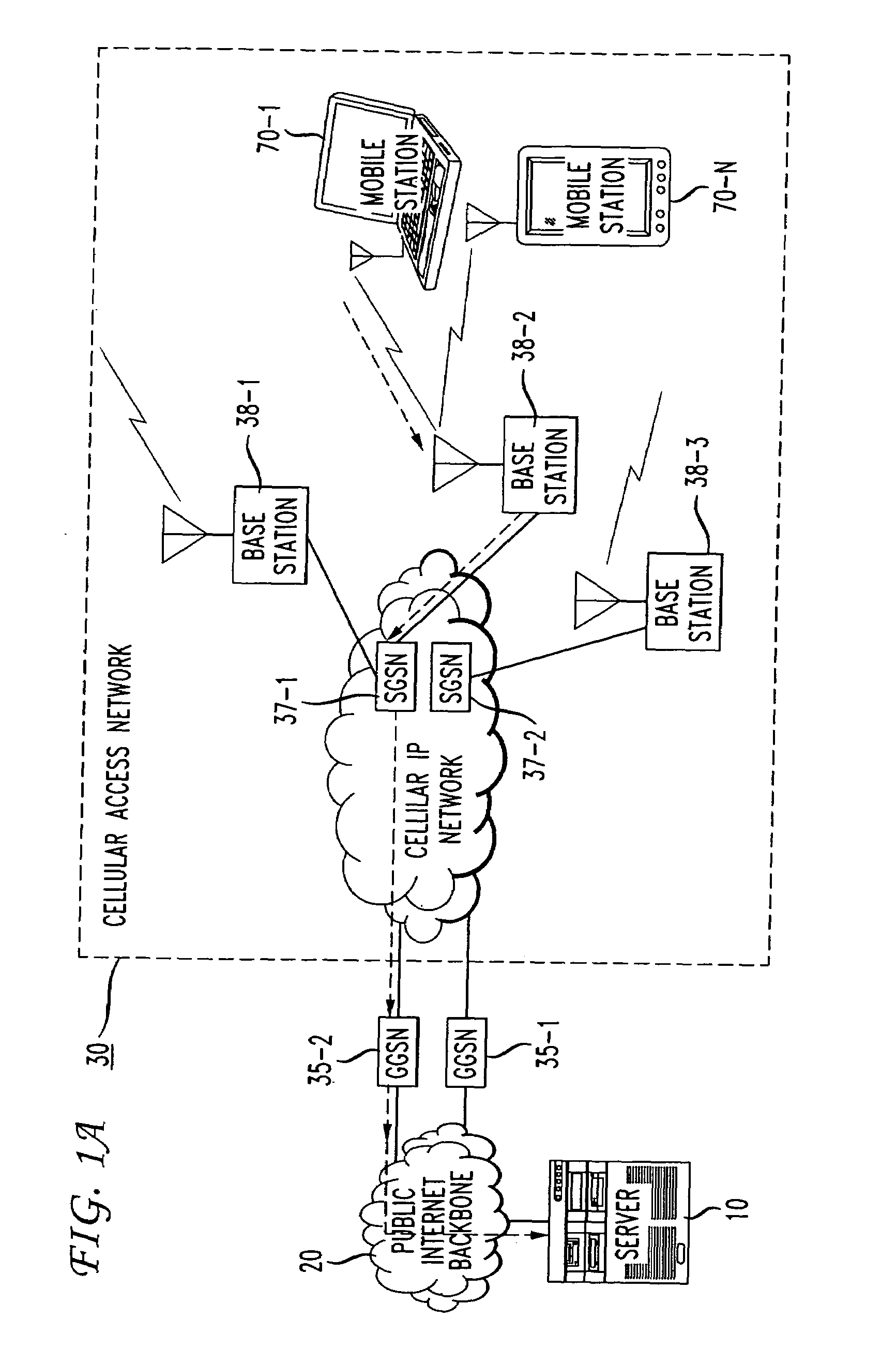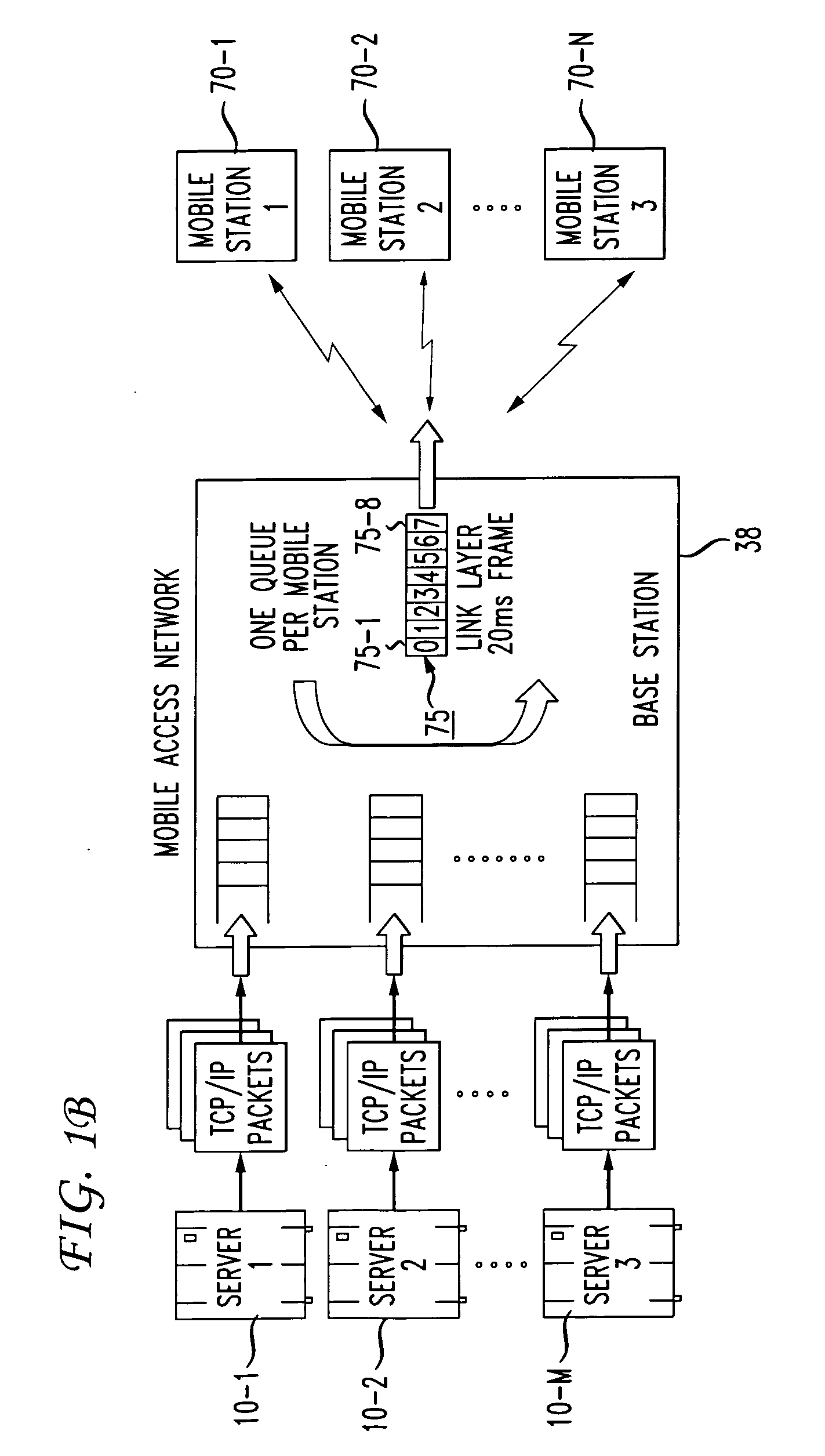Channel efficiency based packet scheduling for interactive data in cellular networks
a packet scheduling and cellular network technology, applied in the field of packet cellular wireless networks, can solve the problems of further complicated situation, different amounts of data sent by mobile stations that consume about the same amount of resources, etc., and achieve the effect of less errored modulation schemes, less bit rate, and channel efficiency
- Summary
- Abstract
- Description
- Claims
- Application Information
AI Technical Summary
Benefits of technology
Problems solved by technology
Method used
Image
Examples
Embodiment Construction
[0025]Referring to FIG. 1A, there is shown a system block diagram of a third generational GPRS (General Packet Radio Service) wireless system with an Enhanced Data rates for GSM Evolution (EDGE) air interface known in the art which is used by way of example as a wireless cellular system in which the algorithm of the present invention may be used to advantage. The present invention is simplistically shown in FIG. 13 comprising a channel efficiency based scheduling algorithm for scheduling packet delivery in such a system. The GPRS / EDGE system will be discussed by way of example only and the invention is not intended to be limited to such system but may be utilized in any wireless telecommunication system for scheduling packet delivery, including mobile and fixed users or a pico, micro or macro cellular system, within a building or outside.
[0026]In FIGS. 1A and 1B showing the GPRS cellular system with an EDGE air interface used by way of example, mobile stations (MS) 70, numbered from...
PUM
 Login to View More
Login to View More Abstract
Description
Claims
Application Information
 Login to View More
Login to View More - R&D
- Intellectual Property
- Life Sciences
- Materials
- Tech Scout
- Unparalleled Data Quality
- Higher Quality Content
- 60% Fewer Hallucinations
Browse by: Latest US Patents, China's latest patents, Technical Efficacy Thesaurus, Application Domain, Technology Topic, Popular Technical Reports.
© 2025 PatSnap. All rights reserved.Legal|Privacy policy|Modern Slavery Act Transparency Statement|Sitemap|About US| Contact US: help@patsnap.com



